
Copper"s role in Middle East trade and supply chain solutions. "
The Middle East and West Asia region, which includes countries such as Saudi Arabia, Iran, Turkey, and the United Arab Emirates, has a significant demand for copper. This demand is driven by factors such as urbanization, construction activities, electrical infrastructure development, industrial growth, and the manufacturing sector. The region has been witnessing significant infrastructure development, including the construction of residential buildings, commercial complexes, transportation networks, and power generation facilities. These projects require large quantities of copper for electrical wiring, plumbing systems, and other applications, leading to increased demand.
While the region has some copper mining operations, it remains a net importer of copper. Countries in the region rely on imports from countries like Chile, Peru, and other major copper producers to meet their demand. Major trading hubs for copper in the region include Dubai in the United Arab Emirates and Istanbul in Turkey. These hubs facilitate the trading, distribution, and supply of copper to meet the needs of local industries and markets. Copper recycling is gaining importance in the region as a means to meet the growing demand for copper and promote sustainability. Recycling centers and facilities are being established to collect, process, and supply recycled copper to various industries.
The copper market in the Middle East and West Asia is influenced by global copper prices, which are determined by factors such as global demand, supply disruptions, economic conditions, and market speculation. Price fluctuations can impact the profitability and cost-effectiveness of copper-related industries in the region. The cathode is sent to the foundry unit in the refinery and leaching. This unit consists of two parts, continuous and semi-continuous casting. Among the products of the semi-continuous casting, the sector is slabbed (copper flat ingots) which are produced according to ASTM B5 standard. Generally, the dimensions of slabs in the form of flat sheets are as follows:
- Length: 7300 mm
- Width: 660 mm
- Thickness: 127 mm
The growing population, rising disposable incomes, and increasing adoption of technology have boosted the demand for electrical and electronic devices in the region. Copper is a key material used in the manufacturing of electrical wiring, transformers, motors, and other electronic components, further driving copper consumption. The Middle East and West Asia region has seen rapid industrial growth, with sectors such as construction, automotive, aerospace, and machinery manufacturing expanding. These industries utilize copper and copper alloys for various applications, including heat exchangers, pipes, fittings, and machinery components.
The cathode produced in the refinery and leaching is sent to the casting unit. This unit consists of two parts, continuous and semi-continuous casting. One of the products of the semi-continuous casting sector is billet (copper cylindrical ingot) which is produced according to ASTM B5 standard. The dimensions of the billet, which is cylindrical or wire, are as follows:
- Length: 7300 mm
- Diameter: 250 mm
The existence of several copper mines in Iran and the Middle East and its export to other countries has made Iran a supplier of about 3% of the world's copper reserves. For example, in the first seven months of 1995, about 200 kilograms of copper ingots were exported to other countries, which is about $ 1,193,376. If you are looking to buy or sell copper metal, the 20 iron system will be by your side in this field. Economic efficiency! After the rise in copper prices, it happened that they preferred aluminum wire to copper wire. The price of copper is higher than aluminum, while the equivalent amount of aluminum is 50% more than the area of copper, and this means exactly the economic cost.
But the high price of copper is not one hundred percent unreasonable. Unlike aluminum - which loses its performance and becomes dangerous when oxidized - copper does not lose its properties when oxidized and continues to work. Copper is a much safer choice for the electricity industry and of course, it has higher efficiency, high conductivity of copper makes it possible to use copper in power plants. Copper also has lower strength, which makes it more conductive.
In general, the main advantage of copper wire is its strength and flexibility. Ease of flexibility, wiring, and installation. The conductivity in copper is so high that you need small conductors and because of its physical strength, you will be sure that you have strong and safe connections. Also, the high flexibility of copper ensures that there is no risk of fracture on copper. The only drawback is that copper is expensive.
-
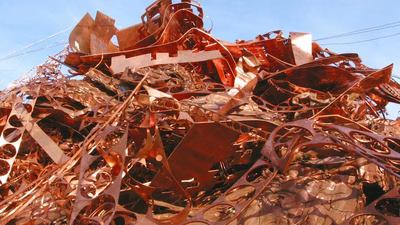
Copper recycling significantly conserves natural resources by reducing the need for new mining and extraction, thus preserving valuable copper ore reserves. The process requires 85-90% less energy than primary production, leading to lower greenhouse gas emissions and a reduced carbon footprint. Recycling also diverts copper waste from landfills, minimizing environmental pollution. The industry creates jobs in collection, sorting, processing, and manufacturing recycled copper, contributing to economic growth. Various sources of recyclable copper include wiring from electronics, pipes, fittings, and even discarded coins. The recycling process involves sorting, shredding, melting, and purifying to produce new copper products or alloys. Approximately 40% of annual copper alloy consumption comes from recycled materials. Copper"s properties such as high electrical and thermal conductivity make it essential in various applications including electrical transmission and heat exchangers.
Its corrosion resistance further enhances its utility across industrial sectors. "
-
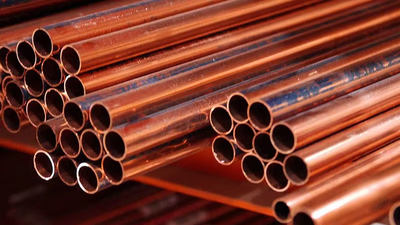
Copper ingots are primarily produced through smelting and casting, where copper ore is extracted, processed, and refined. The smelting process involves heating concentrated copper ore with fluxes in a furnace to separate impurities, resulting in molten copper. This molten metal is then poured into molds to solidify into ingots. An alternative method for producing copper ingots is electrolytic refining, which uses an acidic copper sulfate solution to deposit copper ions onto a cathode through electrolysis. Copper ingots come in various grades, with purity levels ranging from 99. 95% to 99. 99%. These ingots serve as a fundamental form of copper for manufacturing products and alloys.
Additionally, recycling processes can convert scrap copper into new ingots by shredding and smelting used materials like wiring and pipes. Copper has historical significance dating back to ancient civilizations and remains vital in modern applications due to its excellent conductivity and malleability.
-

The Middle East and West Asia exhibit a robust demand for copper, driven by urbanization, construction, and industrial growth. Key countries like Saudi Arabia, Iran, Turkey, and the UAE are experiencing significant infrastructure development that necessitates large quantities of copper for electrical wiring and plumbing systems. Despite having some mining operations, the region remains a net importer of copper, relying on imports from major producers such as Chile and Peru. Dubai and Istanbul serve as crucial trading hubs for copper distribution. The rise in population and disposable incomes has further increased the demand for electrical devices, making copper essential in manufacturing components like transformers and motors. Additionally, the region is witnessing a growing emphasis on copper recycling to promote sustainability. Global copper prices significantly influence the local market dynamics, affecting profitability across various industries. While the high cost of copper compared to alternatives like aluminum can deter some users, its superior conductivity and safety make it a preferred choice in electrical applications. The ongoing industrial expansion across sectors such as construction and automotive continues to drive copper consumption in this region.
-
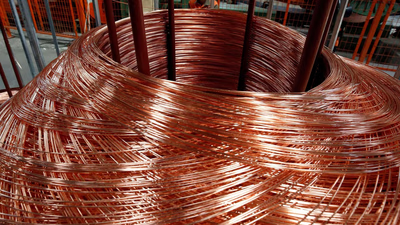
Copper toxicity can occur from excessive consumption or inhalation, leading to symptoms like nausea, abdominal pain, and severe organ damage. Acute cases are rare and often linked to occupational exposure or accidental ingestion. Wilson"s disease, a genetic disorder affecting copper metabolism, results in copper accumulation in organs, necessitating treatment to reduce intake and eliminate excess copper. Allergic reactions to copper may arise from skin contact, causing irritation or dermatitis. Copper"s antimicrobial properties have led to its use in medical settings to reduce infection risks. Recent advancements include a bioactive implant that combines collagen with copper particles, significantly reducing bacterial populations and enhancing bone growth. This innovative approach offers a potential one-step treatment for bone infections without antibiotics. While copper is essential for various bodily functions, excessive exposure can lead to health issues.
Its traditional medicinal uses are often unsupported by scientific evidence, although some claim benefits for arthritis relief. The metal"s ability to inhibit microbial growth has prompted its application in hospital environments to combat infections. "
-
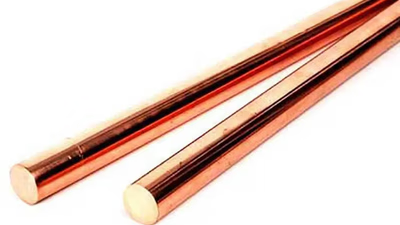
Copper is a vital transition metal, known for its high electrical and thermal conductivity. It has been utilized since ancient civilizations, marking the beginning of the Bronze Age. Found in various minerals, copper is primarily extracted from ores through mining processes. Its applications span across electrical wiring, plumbing, and architecture, making it the third most widely used industrial metal globally. The majority of copper consumption is attributed to electrical applications, with significant recycling potential that enhances its sustainability. Copper alloys like bronze and brass exhibit improved properties, further expanding its utility. Additionally, copper"s antimicrobial properties make it valuable in medical settings. However, the environmental impact of copper mining necessitates sustainable practices to mitigate habitat destruction and pollution. "
-
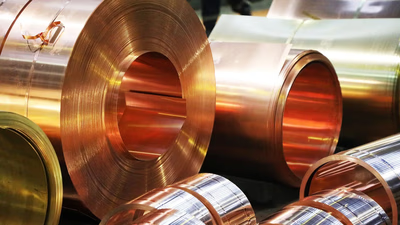
Copper and its alloys, including bronze, brass, and cupronickel, play a significant role in various industries due to their unique properties. Bronze, an alloy of copper and tin, is known for its strength and corrosion resistance, making it ideal for sculptures and mechanical components. Brass, primarily composed of copper and zinc, is valued for its malleability and attractive appearance, commonly used in musical instruments and plumbing fittings. Cupronickel combines copper with nickel to enhance corrosion resistance in marine applications. Other notable alloys include leaded brass for improved machining properties and special alloys like aluminum bronze that offer high strength and thermal conductivity. The classification of these alloys is based on their composition, with variations such as alpha brass (less than 37% zinc) and phosphor bronzes that include additional elements for enhanced performance. Understanding these types of copper alloys is crucial for businesses engaged in import-export activities within the Middle East trade platform.
-
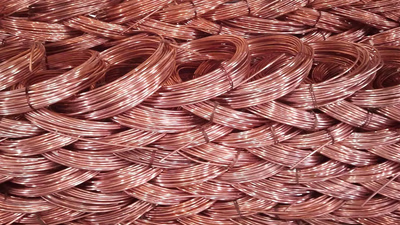
Copper is a vital metal extensively used across various industries, particularly in electricity and construction. Its excellent conductivity makes it the preferred choice for electrical wiring, power cables, and electronic devices. The electricity sector is the largest consumer of copper due to its efficiency in transmitting electricity. Additionally, copper"s strength and resistance to corrosion enhance its suitability for motors and converters. In telecommunications, copper remains essential for high-speed data transmission despite advancements in fiber optics. The metal"s versatility extends to building construction, where it is utilized in plumbing, roofing, and heat transfer systems. Its recyclability adds an environmental benefit, allowing for sustainable practices in construction. Copper"s unique properties also contribute to safety; it does not burn or release harmful gases during fires and helps prevent bacterial growth in water supply systems. Overall, copper"s multifaceted applications underscore its importance in modern infrastructure and technology.







